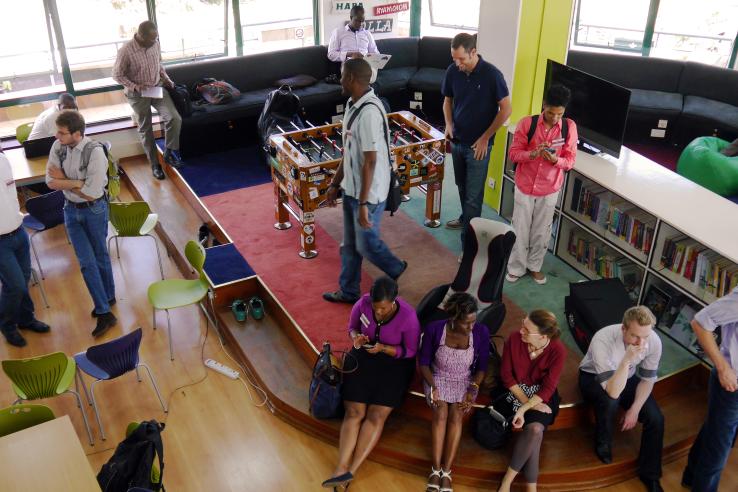
Policy and research to combat bias in the workplace

Rigorous research has shown that discriminatory practices are often embedded in the workplace. For instance, a randomized evaluation found that individuals with names commonly associated with members of minority groups can be less likely to be invited to interviews, compared to individuals with similar backgrounds whose names are from majority groups. This type of discrimination may prevent members of minority groups from reaching their full earning potential.
Many organizations have been developing tools and strategies to counter this type of bias for their employees. But how can we know which strategies are the most effective at combating bias in employment and at the workplace? Rigorous evaluation of these innovations—particularly ones that combine insights from different areas of expertise and bring researchers and practitioners together—can help us better understand which are effective and in what contexts.
To gain insights from researchers and practitioners on the need for evidence and where new research could be useful, J-PAL hosted a webinar on July 5, 2022 that featured a panel discussion between policy experts and researchers. We were joined by Luc Laeven from the European Central Bank (ECB), Khyati Sundaram from the tech company Applied, and Chinmaya Kumar (University of Chicago), who discussed current challenges, promising innovations in the field and where further research is needed. The conversation was moderated by J-PAL affiliated professor, Marianne Bertrand (University of Chicago; Co-Chair, J-PAL’s Labor Markets sector).
The role of evidence in reducing workplace bias
Luc Laeven, the director-general of research at the ECB, shared insights from his work, where he looked at reasons behind the low representation of women in leadership positions within the ECB. Using administrative data from the ECB, Luc and coauthors found that gender gaps in the organization were mainly a result of differences in career progression between men and women. Based on these findings, the ECB has been leading a series of efforts seeking to improve women’s promotion trajectories.
Khyati Sundaram, CEO of Applied, discussed the company’s approach to improving diversity in hiring processes. Applied works with hundreds of organizations globally seeking to improve their hiring practices and increase representation of minority and non-traditional candidates. Drawing on data-driven insights, Applied’s software provides firms with data that can help them overcome their biases and make more informed hiring decisions.
Chinmaya Kumar, a PhD student, presented preliminary results of his research on discrimination towards minority groups in leadership positions. Through a pilot randomized evaluation in India, Chinmaya found that managers belonging to minority groups face discrimination via the type of applicants they receive for a job position. Managers belonging to religious minority groups received about 30 percent fewer applicants, and applicant fit was also much worse. Future research seeks to understand why minority employers face discrimination from below in labor markets and how to overcome it.
Panelist remarks not only highlighted evidence of bias in workplace settings but also the importance of rigorously evaluating the impact of potential solutions to understand whether they achieve their intended outcomes.
Looking forward
Bias and discrimination are widespread in the labor market, from the recruitment process to the workplace itself. Fortunately, some existing research can help us to better understand why inequitable outcomes persist, though additional work is needed. Meanwhile, innovators have developed promising tools that may help to combat internalized biases and end unfair practices.
Moving forward, it is important to combine the expertise of practitioners in this space, many of whom have spent decades designing evidence-based innovations to combat workplace bias, and of researchers with experience in conducting real-world evaluations. Doing so in a systematic way, and in particular by involving experts from a variety of fields, can help address these challenges of understanding what tools are particularly impactful and when and where new research is needed. Through this approach, we can build out a body of evidence that can contribute in a meaningful way to ending discrimination in workplace settings.




